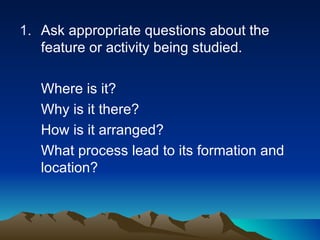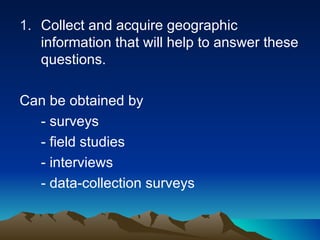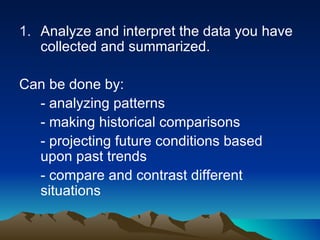Geographic Method
- 1. Geographic Method follows a logical sequence of steps each step leads logically to the next
- 2. Ask appropriate questions about the feature or activity being studied. Where is it? Why is it there? How is it arranged? What process lead to its formation and location?
- 3. Collect and acquire geographic information that will help to answer these questions. Can be obtained by - surveys - field studies - interviews - data-collection surveys
- 4. Organize, summarize and display the geographic information gathered. Can be done by: - drawing maps - taking photos - using tables/graphs to display statistics
- 5. Analyze and interpret the data you have collected and summarized. Can be done by: - analyzing patterns - making historical comparisons - projecting future conditions based upon past trends - compare and contrast different situations
- 6. 5. Formulate a reasonable answer to the geographic questions based on your analysis and interpretation of the information gathered.
- 7. p.8-9 textbook Case Study: Building A Restaurant







